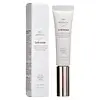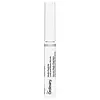What's inside
What's inside
 Key Ingredients
Key Ingredients

 Benefits
Benefits

 Concerns
Concerns

 Ingredients Side-by-side
Ingredients Side-by-side

Water
Skin ConditioningButylene Glycol
HumectantGlycerin
Humectant1,2-Hexanediol
Skin ConditioningHydrolyzed Keratin
HumectantHydrolyzed Silk
HumectantHydrolyzed Collagen
EmollientAmmonium Acryloyldimethyltaurate/Vp Copolymer
Panthenol
Skin ConditioningPentylene Glycol
Skin ConditioningNiacinamide
SmoothingHydroxyethylcellulose
Emulsion StabilisingBiotin
AntiseborrhoeicCaprylyl Glycol
EmollientMyristoyl Pentapeptide-17
Skin ConditioningBiotinoyl Tripeptide-1
Copper Tripeptide-1
Skin ConditioningAcetyl Hexapeptide-8
HumectantCaffeine
Skin ConditioningDisodium EDTA
Benzoic Acid
MaskingSodium Benzoate
MaskingWater, Butylene Glycol, Glycerin, 1,2-Hexanediol, Hydrolyzed Keratin, Hydrolyzed Silk, Hydrolyzed Collagen, Ammonium Acryloyldimethyltaurate/Vp Copolymer, Panthenol, Pentylene Glycol, Niacinamide, Hydroxyethylcellulose, Biotin, Caprylyl Glycol, Myristoyl Pentapeptide-17, Biotinoyl Tripeptide-1, Copper Tripeptide-1, Acetyl Hexapeptide-8, Caffeine, Disodium EDTA, Benzoic Acid, Sodium Benzoate
Water
Skin ConditioningGlycerin
HumectantButylene Glycol
HumectantMyristoyl Pentapeptide-17
Skin ConditioningBiotinoyl Tripeptide-1
Oligopeptide-2
Skin ConditioningAcetyl Tetrapeptide-3
Skin ProtectingCaffeine
Skin ConditioningPanthenol
Skin ConditioningArginine
MaskingGlycine
BufferingGlycoproteins
Skin ConditioningLarix Europaea Wood Extract
HumectantTrifolium Pratense Flower Extract
AstringentCamellia Sinensis Leaf Extract
AntimicrobialDextran
Maltodextrin
AbsorbentZinc Chloride
AntimicrobialHydroxyethylcellulose
Emulsion StabilisingXanthan Gum
EmulsifyingTrisodium Ethylenediamine Disuccinate
Polysorbate 20
EmulsifyingSodium Metabisulfite
AntioxidantCaprylyl Glycol
Emollient1,2-Hexanediol
Skin ConditioningSodium Benzoate
MaskingBenzoic Acid
MaskingEthylhexylglycerin
Skin ConditioningPhenoxyethanol
PreservativeChlorphenesin
AntimicrobialWater, Glycerin, Butylene Glycol, Myristoyl Pentapeptide-17, Biotinoyl Tripeptide-1, Oligopeptide-2, Acetyl Tetrapeptide-3, Caffeine, Panthenol, Arginine, Glycine, Glycoproteins, Larix Europaea Wood Extract, Trifolium Pratense Flower Extract, Camellia Sinensis Leaf Extract, Dextran, Maltodextrin, Zinc Chloride, Hydroxyethylcellulose, Xanthan Gum, Trisodium Ethylenediamine Disuccinate, Polysorbate 20, Sodium Metabisulfite, Caprylyl Glycol, 1,2-Hexanediol, Sodium Benzoate, Benzoic Acid, Ethylhexylglycerin, Phenoxyethanol, Chlorphenesin
 Reviews
Reviews

Ingredients Explained
These ingredients are found in both products.
Ingredients higher up in an ingredient list are typically present in a larger amount.
1,2-Hexanediol is a synthetic liquid and another multi-functional powerhouse.
It is a:
- Humectant, drawing moisture into the skin
- Emollient, helping to soften skin
- Solvent, dispersing and stabilizing formulas
- Preservative booster, enhancing the antimicrobial activity of other preservatives
Benzoic Acid is used to preserve and adjust the pH of products.
The antimicrobial property of Benzoic Acid helps elongate a product's shelf life. Its main role is to reduce fungi growth and is not found to be effective at fighting bacteria. Therefore Benzoic Acid is always added along with other preservatives.
In its pure form, Benzoic Acid looks like a white crystalline solid. It has slight solubility in water.
The name of Benzoic Acid comes from gum benzoin, which used to be the sole source of deriving this ingredient. Benzoic Acid is the most simple aromatic carboxylic acid.
Benzoic Acid is naturally occuring in strawberries, mustard, cinnamon, and cloves. It has a slight scent but is not considered to be a fragrance.
Learn more about Benzoic AcidBiotinoyl Tripeptide-1 is a lab-made molecule that combines two parts: biotin (vitamin B7) and Tripeptide-1. Together, they form a peptide that’s often used in hair and eyelash products.
In-vitro studies show this ingredient helps hair bulb cells grow faster and product more structual proteins. This helps keep hair securely anchored in the follicle.
A small human study using a mascara with 2% Biotinoyl Tripeptide-1 reported lashes that were about 17% longer and 19% thicker after one month.
One study from 2025 compared topical spray vs. a combined tropical/oral treatment. The combination group saw greater increases in total hair count.
While these early results are encouraging, most of the data comes from in-vitro experiments (in test tubes) or small, short-term trials.
Biotinoyl Tripeptide-1 looks promising for supporting hair strength and growth but there’s not yet strong clinical evidence to confirm how well it works.
Learn more about Biotinoyl Tripeptide-1Butylene Glycol (or BG) is used within cosmetic products for a few different reasons:
Overall, Butylene Glycol is a safe and well-rounded ingredient that works well with other ingredients.
Though this ingredient works well with most skin types, some people with sensitive skin may experience a reaction such as allergic rashes, closed comedones, or itchiness.
Learn more about Butylene GlycolCaffeine is most associated with coffee, tea, and cacao. In skincare, it helps with calming inflammation and is rich in antioxidants.
While caffeine is used to treat cellulite and and dark circles, further studies are needed to prove this. It has been believed to help with these skin conditions due to its ability to dilate blood vessels and increase blood flow.
Some studies are looking into caffeine's ability to protect against UV rays.
Learn more about CaffeineCaprylyl Glycol is a humectant and emollient, meaning it attracts and preserves moisture.
It is a common ingredient in many products, especially those designed to hydrate skin. The primary benefits are retaining moisture, skin softening, and promoting a healthy skin barrier.
Though Caprylyl Glycol is an alcohol derived from fatty acids, it is not the kind that can dry out skin.
This ingredient is also used as a preservative to extend the life of products. It has slight antimicrobial properties.
Learn more about Caprylyl GlycolGlycerin is already naturally found in your skin. It helps moisturize and protect your skin.
A study from 2016 found glycerin to be more effective as a humectant than AHAs and hyaluronic acid.
As a humectant, it helps the skin stay hydrated by pulling moisture to your skin. The low molecular weight of glycerin allows it to pull moisture into the deeper layers of your skin.
Hydrated skin improves your skin barrier; Your skin barrier helps protect against irritants and bacteria.
Glycerin has also been found to have antimicrobial and antiviral properties. Due to these properties, glycerin is often used in wound and burn treatments.
In cosmetics, glycerin is usually derived from plants such as soybean or palm. However, it can also be sourced from animals, such as tallow or animal fat.
This ingredient is organic, colorless, odorless, and non-toxic.
Glycerin is the name for this ingredient in American English. British English uses Glycerol/Glycerine.
Learn more about GlycerinHydroxyethylcellulose is used to improve the texture of products. It is created from a chemical reaction involving ethylene oxide and alkali-cellulose. Cellulose is a sugar found in plant cell walls and help give plants structure.
This ingredient helps stabilize products by preventing ingredients from separating. It can also help thicken the texture of a product.
This ingredient can also be found in pill medicines to help our bodies digest other ingredients.
Learn more about HydroxyethylcelluloseMyristoyl Pentapeptide-17 isn't fungal acne safe and is a peptide.
Panthenol is a common ingredient that helps hydrate and soothe the skin. It is found naturally in our skin and hair.
There are two forms of panthenol: D and L.
D-panthenol is also known as dexpanthenol. Most cosmetics use dexpanthenol or a mixture of D and L-panthenol.
Panthenol is famous due to its ability to go deeper into the skin's layers. Using this ingredient has numerous pros (and no cons):
Like hyaluronic acid, panthenol is a humectant. Humectants are able to bind and hold large amounts of water to keep skin hydrated.
This ingredient works well for wound healing. It works by increasing tissue in the wound and helps close open wounds.
Once oxidized, panthenol converts to pantothenic acid. Panthothenic acid is found in all living cells.
This ingredient is also referred to as pro-vitamin B5.
Learn more about PanthenolSodium Benzoate is a preservative. It's used in both cosmetic and food products to inhibit the growth of mold and bacteria. It is typically produced synthetically.
Both the US FDA and EU Health Committee have approved the use of sodium benzoate. In the US, levels of 0.1% (of the total product) are allowed.
Sodium benzoate works as a preservative by inhibiting the growth of bacteria inside of cells. It prevents the cell from fermenting a type of sugar using an enzyme called phosphofructokinase.
It is the salt of benzoic acid. Foods containing sodium benzoate include soda, salad dressings, condiments, fruit juices, wines, and snack foods.
Studies for using ascorbic acid and sodium benzoate in cosmetics are lacking, especially in skincare routines with multiple steps.
We always recommend speaking with a professional, such as a dermatologist, if you have any concerns.
Learn more about Sodium BenzoateWater. It's the most common cosmetic ingredient of all. You'll usually see it at the top of ingredient lists, meaning that it makes up the largest part of the product.
So why is it so popular? Water most often acts as a solvent - this means that it helps dissolve other ingredients into the formulation.
You'll also recognize water as that liquid we all need to stay alive. If you see this, drink a glass of water. Stay hydrated!
Learn more about Water